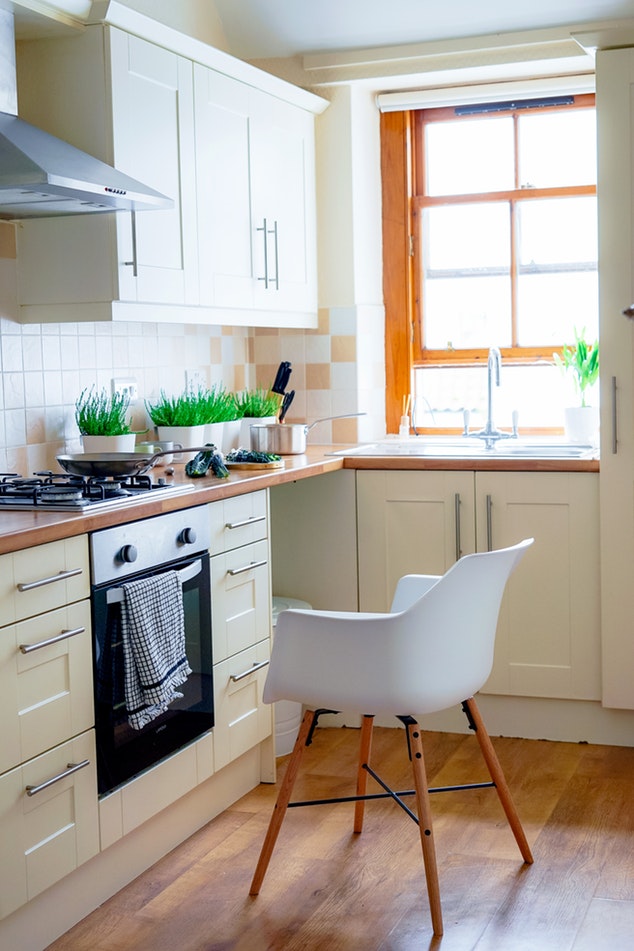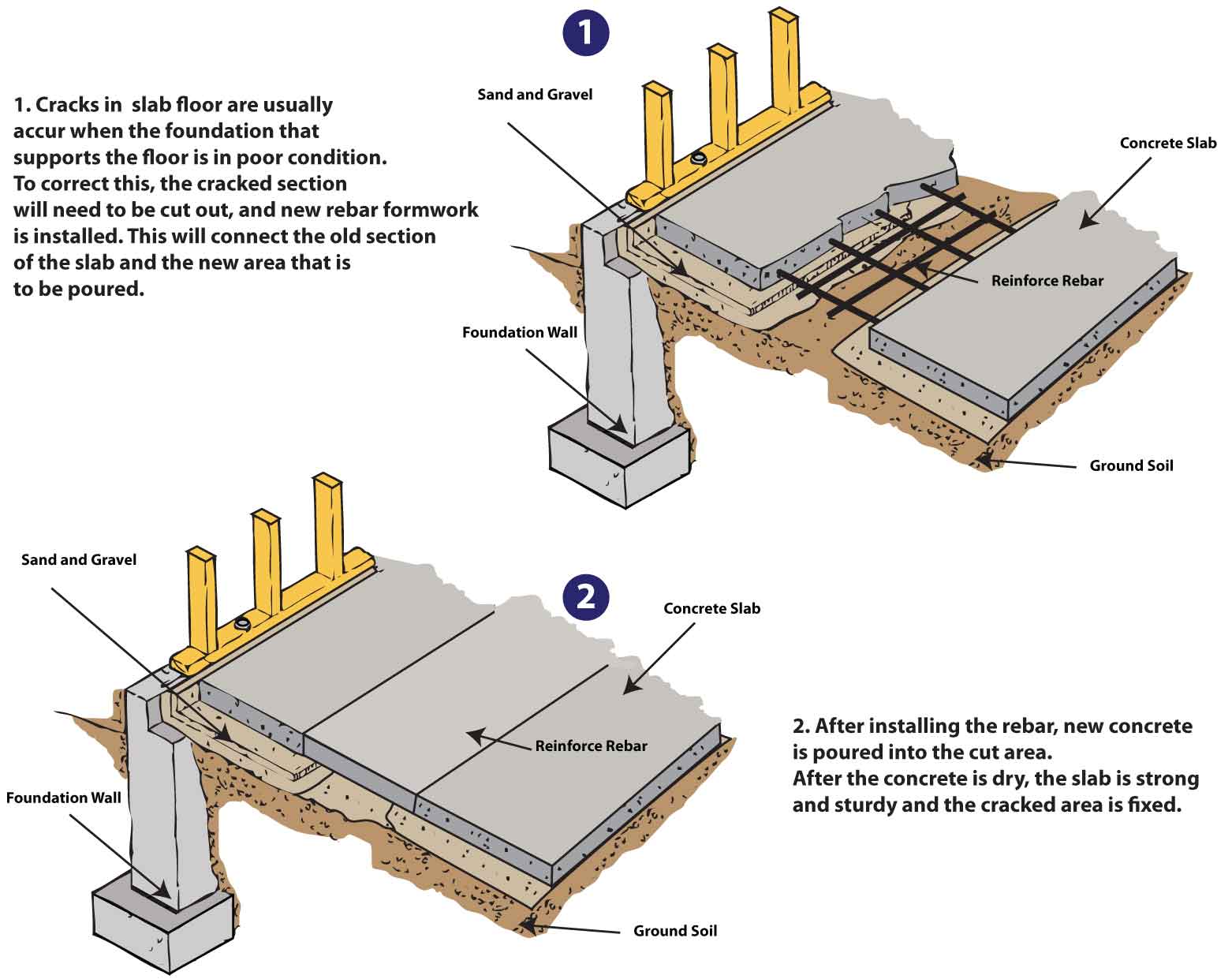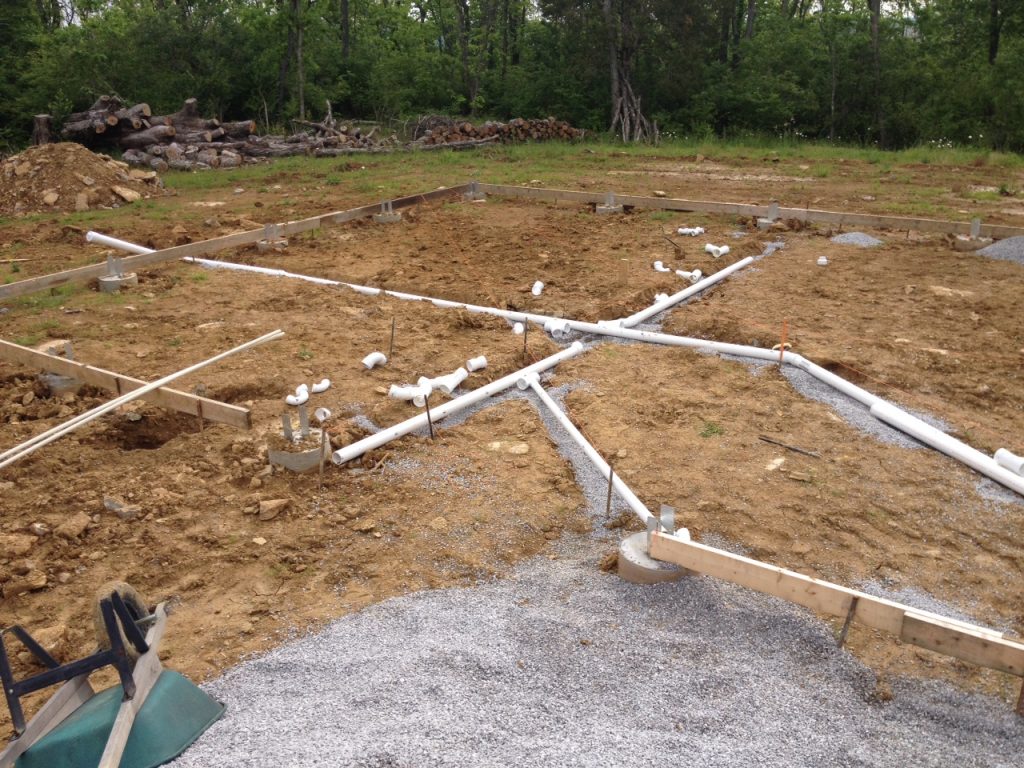If you're a homeowner with a slab on grade foundation, you may have noticed that your kitchen sink drain doesn't have a visible cleanout. This can make cleaning out clogs or performing maintenance on your plumbing a bit more challenging. But don't worry, there are still ways to properly clean out your kitchen sink drain and maintain your plumbing system. In this article, we'll discuss everything you need to know about plumbing kitchen sink cleanout slab on grade systems.Plumbing Kitchen Sink Cleanout Slab on Grade
Before we dive into the specifics of cleaning out a kitchen sink drain in a slab on grade foundation, let's first understand what this term means. A slab on grade foundation refers to a type of construction where the home's foundation is a concrete slab that is placed directly on the ground. This is in contrast to traditional foundations that have a basement or crawl space beneath the home. In slab on grade homes, the plumbing is typically located under the concrete slab, making it more difficult to access. Now, let's talk about the cleanout. A cleanout is a pipe or fitting that provides access to your plumbing system for maintenance and cleaning purposes. In traditional homes, this is usually located outside the home or in the basement. However, in a slab on grade home, the cleanout may be located under the concrete slab or in a hard-to-reach area. This can make it challenging to clean out clogs or perform maintenance on your kitchen sink drain.Plumbing Kitchen Sink Cleanout Slab on Grade: What You Need to Know
So, how can you clean out a kitchen sink drain with a slab on grade foundation? The most effective way is to use a plumbing snake or auger. These tools are specifically designed to remove clogs from pipes and can be inserted into your kitchen sink drain to break up and remove any blockages. However, since the cleanout is not easily accessible, you may need to hire a professional plumber who has the necessary equipment and expertise to perform this task. Another option is to use a homemade drain cleaner. You can mix equal parts of baking soda and vinegar and pour it down your kitchen sink drain. Let it sit for about 30 minutes, and then flush it with hot water. This can help break up minor clogs and keep your drain clear. However, this may not be as effective for more severe clogs or blockages.How to Clean Out a Kitchen Sink Drain
Now that you know how to clean out a kitchen sink drain in a slab on grade home, let's discuss some other important considerations for this type of plumbing system. First, it's essential to be aware of any potential issues that may arise due to the location of your plumbing under the concrete slab. For example, if a pipe were to burst or leak, it may be more challenging to detect and repair since it is not easily visible. In addition, since the pipes are located under the slab, they may be more susceptible to damage from shifting soil or tree roots. It's crucial to monitor your plumbing system regularly and address any issues promptly to prevent costly repairs down the line.Slab on Grade Plumbing: What You Need to Know
If you're building a new home with a slab on grade foundation, or if you're doing a major kitchen renovation, you may need to install a new kitchen sink drain. This can be a bit more complicated in a slab on grade home, as the plumbing will need to be installed under the concrete slab. It's best to hire a professional plumber for this task to ensure it is done correctly and to avoid any potential issues in the future. However, if you're handy and want to try it yourself, you can follow these steps: 1. Plan the layout: Determine where you want your kitchen sink to be located and plan the layout accordingly. Keep in mind that the plumbing will need to be installed under the slab, so consider the most efficient route for the pipes. 2. Dig the trenches: Once you have planned the layout, use a shovel to dig trenches for the pipes. Make sure they are deep enough to fit the pipes and allow for proper drainage. 3. Install the pipes: Use PVC pipes and fittings to install the plumbing system. Make sure to follow local building codes and regulations. 4. Pour the concrete slab: Once the plumbing is installed, pour the concrete slab over the pipes. Make sure to leave a small access hole for the cleanout. 5. Install the sink: Once the concrete is dry, you can install your kitchen sink and connect it to the plumbing system.How to Install a Kitchen Sink Drain
To ensure your plumbing system in a slab on grade home functions properly, here are some essential tips to keep in mind: 1. Regular maintenance: As mentioned earlier, it's crucial to regularly monitor and maintain your plumbing system to prevent any issues from arising. 2. Avoid harsh chemicals: Harsh chemicals can damage your pipes and lead to costly repairs. Instead, opt for natural methods to clean and maintain your kitchen sink drain. 3. Be cautious with landscaping: If you're planning on doing any landscaping around your slab on grade home, make sure to avoid planting trees or large shrubs near the plumbing system. Their roots can cause damage to the pipes. 4. Consider installing a cleanout: If possible, it may be beneficial to install a cleanout for your kitchen sink drain. This can make maintenance and cleaning tasks much easier.Plumbing Tips for a Slab on Grade Foundation
In addition to regular maintenance, you may encounter a clogged kitchen sink drain from time to time. Here are some tips to help you unclog it: 1. Use a plunger: A plunger can be an effective tool for removing minor clogs in your kitchen sink drain. 2. Try a drain snake: If the plunger doesn't work, you can use a plumbing snake or auger to break up and remove the clog. 3. Use a drain cleaner: As mentioned earlier, a homemade drain cleaner can be effective for minor clogs. You can also purchase a commercial drain cleaner, but make sure to follow the instructions carefully and use it sparingly to avoid damaging your pipes.How to Unclog a Kitchen Sink Drain
In addition to clogs and leaks, there are a few other common issues that may arise with a slab on grade plumbing system. These include: 1. Low water pressure: This could be due to a blockage or a leak in the pipes. A professional plumber can help identify and fix the issue. 2. Foul odors: If you notice a foul smell coming from your kitchen sink drain, it may be due to a buildup of food particles or other debris. Regularly cleaning out your drain can help prevent this issue. 3. Frozen pipes: In colder climates, the pipes under the slab may be at risk of freezing. Make sure to insulate them properly to prevent this from happening.Slab on Grade Plumbing: Common Issues and Solutions
To avoid dealing with clogs and other plumbing issues, here are some preventative measures you can take: 1. Use a drain strainer: A drain strainer can catch food particles and other debris that may cause clogs, preventing them from going down your drain. 2. Avoid pouring grease down the drain: Grease can solidify and clog your pipes, so make sure to dispose of it properly instead of pouring it down the drain. 3. Run hot water after each use: Running hot water after using your kitchen sink can help prevent any buildup of food particles and keep your drain clear.How to Prevent Clogs in Your Kitchen Sink Drain
If you're building a new home or considering purchasing a home with a slab on grade foundation, it's important to be aware of the unique plumbing considerations for this type of construction. Make sure to regularly maintain your plumbing system and address any issues promptly to keep your pipes in top condition. With the right knowledge and proper maintenance, you can keep your kitchen sink drain and plumbing system functioning properly in a slab on grade home. And if you encounter any significant issues, don't hesitate to call a professional plumber for assistance.Plumbing Considerations for a Slab on Grade Home
Why a Clean Kitchen Sink Drain is Essential for Your House Design

The Importance of a Functional Plumbing System
The Purpose of a Kitchen Sink Cleanout Slab on Grade
 A
kitchen sink cleanout slab on grade
is a small opening or access point located near your kitchen sink drain that allows you to easily clean or
unclog
your drain. It is usually found on the floor and is covered by a removable lid. This component is an important part of your plumbing system as it provides a direct path to your kitchen sink drain, making it easier to remove any
blockages
or debris that may have accumulated.
A
kitchen sink cleanout slab on grade
is a small opening or access point located near your kitchen sink drain that allows you to easily clean or
unclog
your drain. It is usually found on the floor and is covered by a removable lid. This component is an important part of your plumbing system as it provides a direct path to your kitchen sink drain, making it easier to remove any
blockages
or debris that may have accumulated.
The Benefits of a Clean Kitchen Sink Drain
 Having a clean kitchen sink drain not only improves the overall appearance of your kitchen, but it also has several other benefits. A clogged kitchen sink can lead to unpleasant odors, which can be a major turn off for anyone entering your kitchen. It can also result in slow draining water, which can be frustrating and time-consuming. In addition, a clogged kitchen sink can also attract pests and bacteria, posing a threat to your family's health. By keeping your
kitchen sink cleanout slab on grade
free of any blockages, you are ensuring that your kitchen remains clean and hygienic at all times.
Having a clean kitchen sink drain not only improves the overall appearance of your kitchen, but it also has several other benefits. A clogged kitchen sink can lead to unpleasant odors, which can be a major turn off for anyone entering your kitchen. It can also result in slow draining water, which can be frustrating and time-consuming. In addition, a clogged kitchen sink can also attract pests and bacteria, posing a threat to your family's health. By keeping your
kitchen sink cleanout slab on grade
free of any blockages, you are ensuring that your kitchen remains clean and hygienic at all times.
How to Keep Your Kitchen Sink Drain Clean
 Regular maintenance is key to keeping your kitchen sink drain clean and functioning properly. You can start by using a
plunger
to
unclog
any minor blockages. However, for more stubborn blockages, it is best to use a
drain snake
or call a professional plumber. Additionally, avoid pouring any
grease
or
food scraps
down your kitchen sink drain as they can easily build up and cause blockages. Installing a
drain guard
can also help prevent debris from entering your drain.
Regular maintenance is key to keeping your kitchen sink drain clean and functioning properly. You can start by using a
plunger
to
unclog
any minor blockages. However, for more stubborn blockages, it is best to use a
drain snake
or call a professional plumber. Additionally, avoid pouring any
grease
or
food scraps
down your kitchen sink drain as they can easily build up and cause blockages. Installing a
drain guard
can also help prevent debris from entering your drain.
Conclusion
 In conclusion, a clean and functional kitchen sink drain is crucial for the overall design and functionality of your house. By having a
kitchen sink cleanout slab on grade
and following the tips mentioned above, you can ensure that your kitchen sink remains clean and free of any clogs or blockages. Remember to regularly maintain your plumbing system to avoid any costly repairs in the future.
In conclusion, a clean and functional kitchen sink drain is crucial for the overall design and functionality of your house. By having a
kitchen sink cleanout slab on grade
and following the tips mentioned above, you can ensure that your kitchen sink remains clean and free of any clogs or blockages. Remember to regularly maintain your plumbing system to avoid any costly repairs in the future.


















:max_bytes(150000):strip_icc()/how-to-clean-a-kitchen-sink-and-drain-02-5660035-7a630bc36f2c401bbe412bbe85937ff3.jpg)
















/how-to-install-a-sink-drain-2718789-hero-b5b99f72b5a24bb2ae8364e60539cece.jpg)
/how-to-install-a-sink-drain-2718789-hero-24e898006ed94c9593a2a268b57989a3.jpg)
:no_upscale()/cdn.vox-cdn.com/uploads/chorus_asset/file/19495086/drain_0.jpg)




:max_bytes(150000):strip_icc()/how-to-install-a-sink-drain-2718789-04-5715d67f5b7d41429d42bf705bb70e2c.jpg)












:max_bytes(150000):strip_icc()/freshen-and-unclog-drain-with-baking-soda-1900466-22-bbf940b70afa4d5abef0c54da23b1d3f.jpg)

:max_bytes(150000):strip_icc()/how-to-unclog-a-kitchen-sink-2718799_sketch_FINAL-8c5caa805a69493ab22dfb537c72a1b7.png)


































